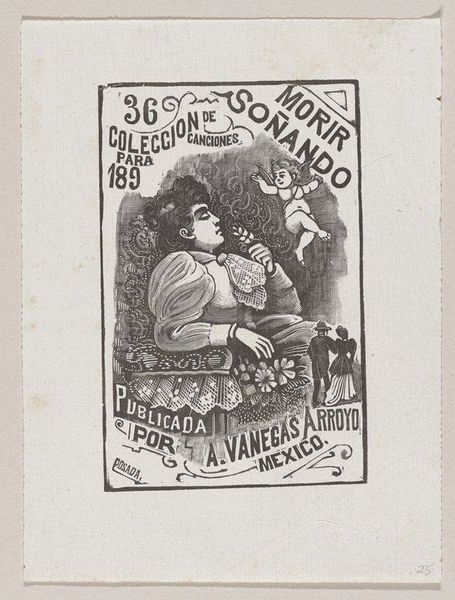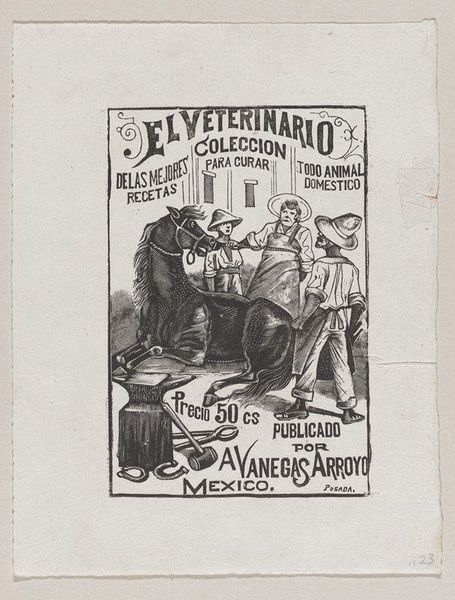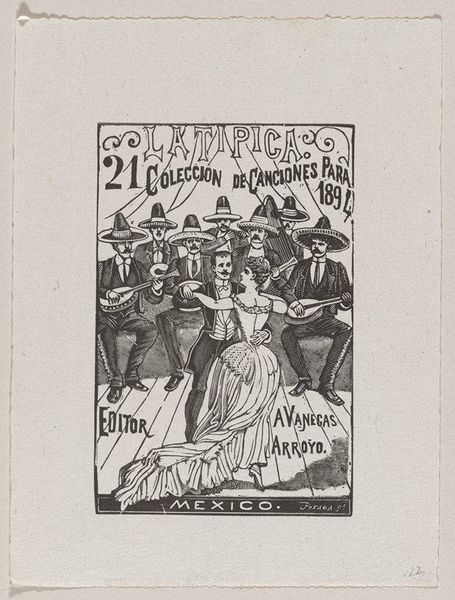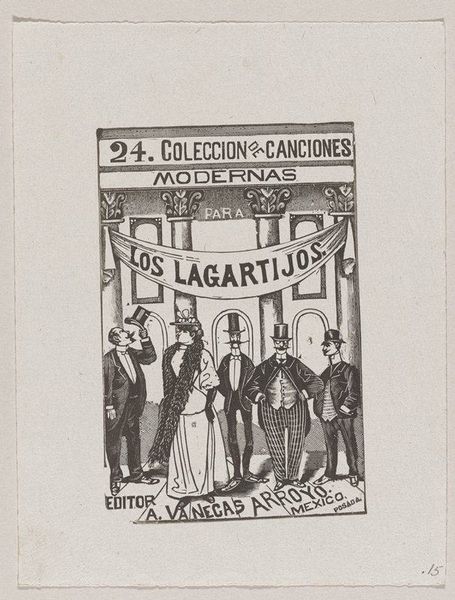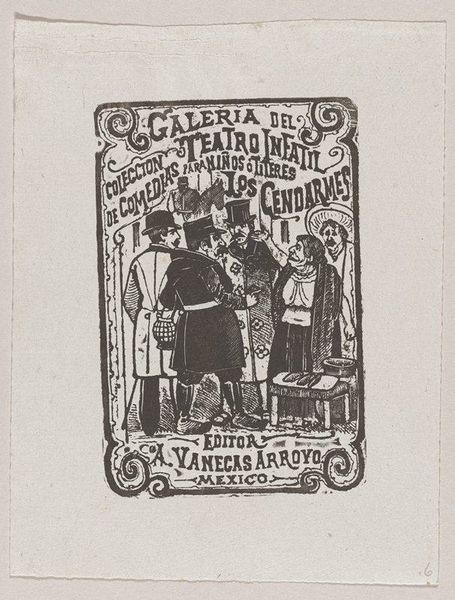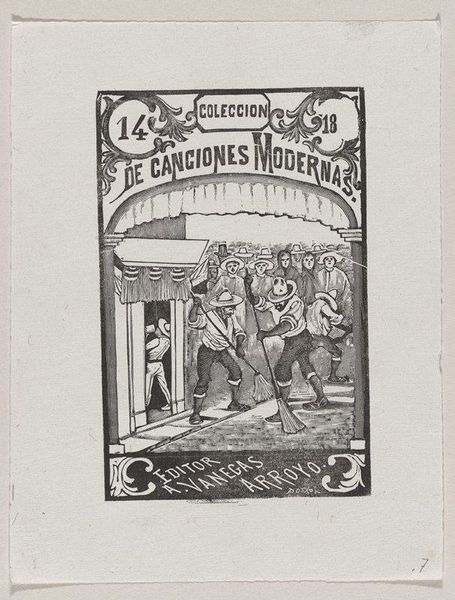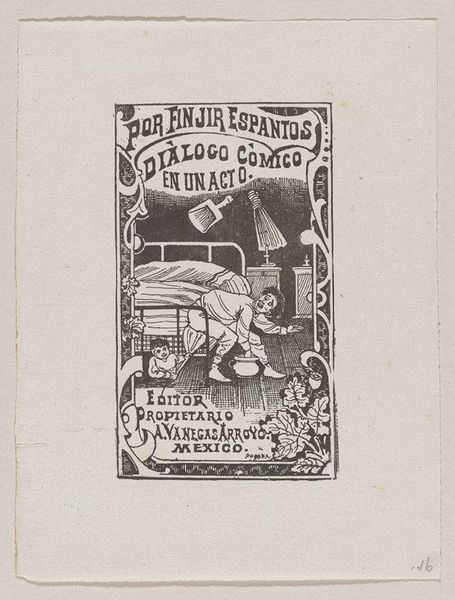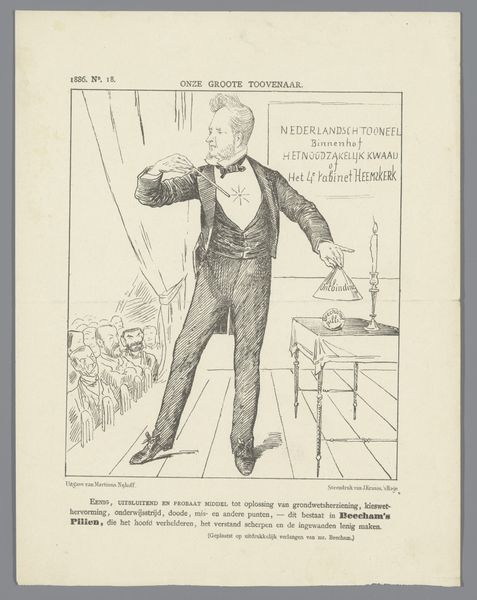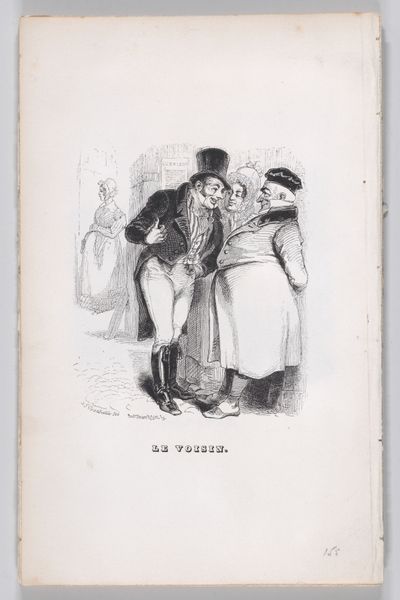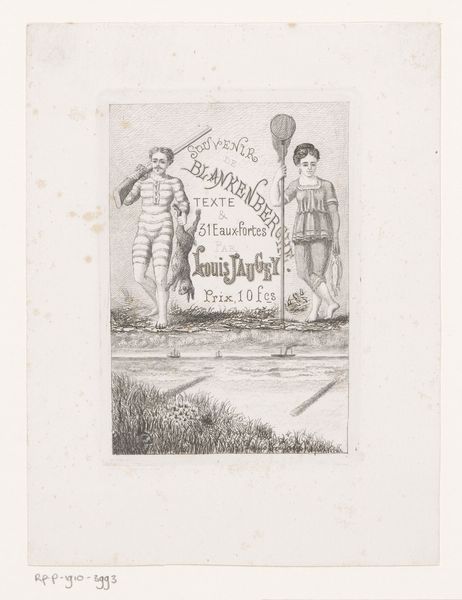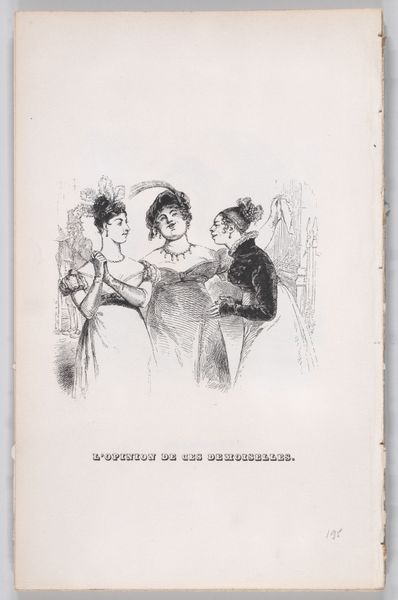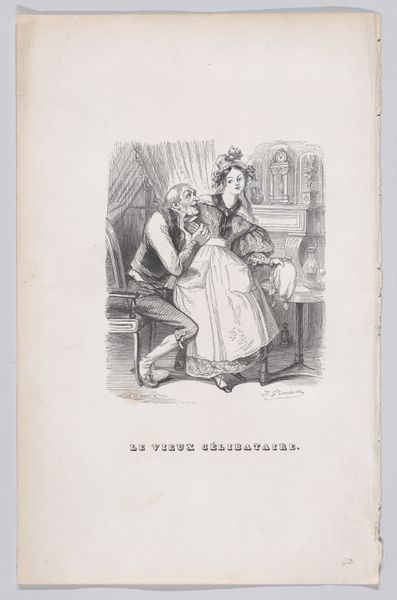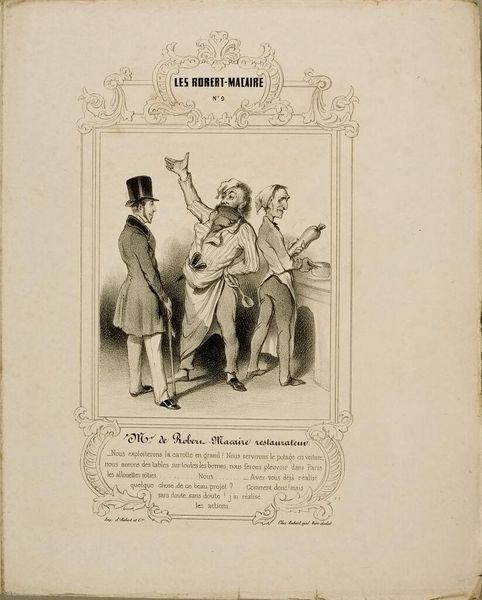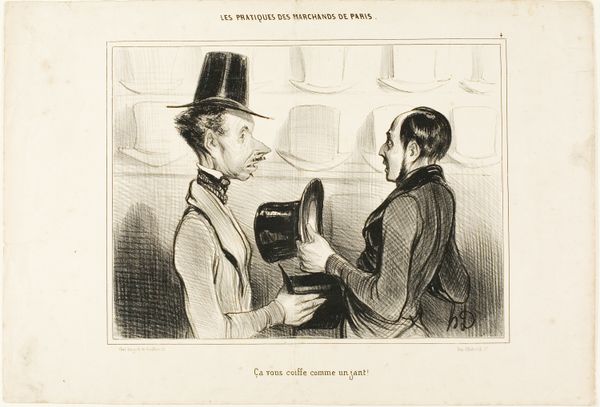
graphic-art, print, woodcut
#
portrait
#
graphic-art
#
narrative-art
# print
#
landscape
#
figuration
#
woodcut
#
line
#
mexican-muralism
Dimensions: 5 5/16 × 3 7/16 in. (13.49 × 8.73 cm) (image)7 5/8 × 5 5/8 in. (19.37 × 14.29 cm) (sheet)
Copyright: No Copyright - United States
Curator: Immediately, I notice the figures seem captured in a moment of poised camaraderie. There's a formal quality to it, yet also something inherently convivial. Editor: Indeed. We’re looking at "El Brindador Popular (The Toast)" from 1942. The artist, José Guadalupe Posada, produced it as a woodcut. The original publisher was A. Vanegas Arroyo in Mexico. Curator: Woodcut is fascinating. It creates a strong linear quality, reminiscent of newspaper print, lending it accessibility and straightforwardness, perfectly befitting its function as a printed piece. It is simple yet has an enduring impact. The composition almost suggests a political cartoon. Editor: Precisely. Posada was a master of imbuing everyday scenes with symbolic weight. Think about the raised glass, a universal gesture of celebration, and how that amplifies within the specific cultural context of post-revolutionary Mexico. It's interesting that it is entitled Cuaderno No 3; This makes it even more interesting as we wonder about the two former publications! Curator: Yes, a key detail. To what is that symbolic gesture directed? Is it directed towards their fellow diners who look on eagerly? Is it toward us, as viewers? In these crowded spaces, these figures take up visual room for an era that still needed time to celebrate, after great conflict. Editor: I am drawn to the somewhat crude but efficient cutting. The central figures become emblems of national spirit. Consider those chandeliers—symbols of newfound wealth, opportunity—even progress—hanging above the more shadowy onlookers. It serves as both a straightforward invitation, and potentially as a commentary on economic disparities still present. Curator: That tension between celebration and social commentary really resonates. The symbolic lighting is powerful, like a stage spotlight that focuses on both the elegance and awkwardness of social mobility in a nation remaking itself. This resonates in broader conversations of Mexican Muralism during this period too. Editor: It gives me plenty to contemplate about art's public role in reflecting national dreams and the subtle politics woven within shared visual language. Curator: Exactly. It really highlights how powerful accessible images can be in constructing, or contesting, a collective memory and identity.
Comments
No comments
Be the first to comment and join the conversation on the ultimate creative platform.
